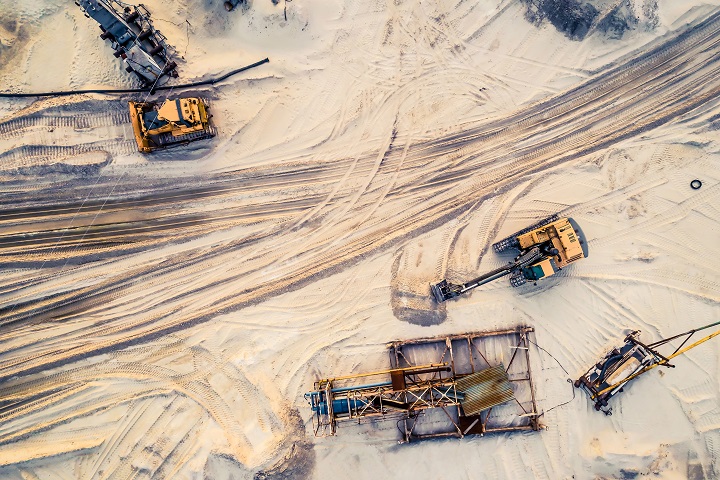As the demand for essential minerals in the transition towards clean energy rises, the World Bank foresees a 500% surge in their production by 2050. This translates to unparalleled growth for the mining sector. However, they also confront a myriad of internal and external hurdles. Internally, the scarcity of skilled workers has prompted mining firms to embrace automation and digitalization to enhance operations. Externally, fluctuations in global resource prices impact the industry, necessitating swift adaptation to cater to diverse mineral extraction requirements. In response to these ongoing changes, mining operations are actively welcoming digital transformation, utilizing technologies such as automation, unmanned systems, and AI for image recognition to amplify operational efficiency and safety.
Cutting-Edge Technologies for Superior Operations
For instance, a Canadian iron mine has introduced automated mining vehicles and intelligent shovels equipped with advanced X-ray fluorescence (XRF) sensors and wireless connectivity, significantly accelerating on-site ore identification and sorting processes. The image recognition system assists in guiding the vehicles and dispatching them based on ore sorting outcomes, enhancing operational efficiency. Moreover, the mining site employs Internet of Things (IoT) technology to link various equipment and vehicles, fostering seamless data exchange and cooperation. This real-time access to crucial data empowers mining vehicle fleets, enabling smooth operations in the mining field. Meanwhile, the utilization of robotic canines in terrain reconnaissance aids a South African gold mine in strategizing suitable mining routes, mitigating risks and ensuring safety.
Embracing Digital Transformation. How About Connectivity Across Mining Locations?
In the era of digital revolution, transmitting and interpreting substantial amounts of data between equipment and systems is vital. However, in minefields, ensuring seamless connectivity between humans and machinery, as well as amongst machinery, poses challenges. We will delve into five communication challenges that contemporary mining operations must prioritize:
Challenge 1: Ensuring Reliable Connectivity
Establishing steadfast communication networks is imperative for dependable mining operations. Nevertheless, formidable minefield conditions, such as dust, extreme temperatures, vibrations, and signal interference, present hurdles. To tackle these obstacles, robust connectivity with swift failover redundancy, seamless roaming, and reliable products is crucial to minimize covert maintenance expenses.
Challenge 2: Seamlessly Fusing Information
Mining operations necessitate the fusion of multiple subsystems for collaboration. However, the diverse equipment and sensors utilized in mining often operate on varying protocols like Modbus, MQTT, and ProfiNet. Thus, seamless integration of communication systems is vital for efficient data acquisition, data sharing, and interoperability between systems.
Challenge 3: Visualizing Communication Structures
In extensive mining sites with limited personnel, ensuring uninterrupted communication for thousands of connected devices poses a challenge. To overcome this, contemporary mining operations utilize visualization strategies to monitor and manage wired and wireless communication devices remotely and in real time. This minimizes malfunctions, enhances equipment maintenance, and boosts operational efficiency.
Challenge 4: Establishing Adaptable Architecture
Scalable infrastructure is essential to meet future growth demands. With the increase in mining equipment and imaging devices, communication infrastructure should be expandable to accommodate escalating needs. The mining site should consider setting aside sufficient bandwidth, evaluating network expansion feasibility, implementing effective tiered management, and integrating edge and cloud technologies for future scalability.
Challenge 5: Network and Data Security
As mining companies interconnect devices and transmit data to remote central control centers, they invariably encounter cybersecurity risks. To address security apprehensions from the control room to the OT field site, it is pivotal to safeguard the network, fortify cybersecurity capabilities, and utilize secure devices based on the IEC 62443 standard.
In a nutshell, the voyage of digital transformation in the mining industry is not devoid of obstacles. Nonetheless, by harnessing the potential of technology and confronting communication hurdles head-on, contemporary mining operations can enhance their efficacy and safety. Through this transformative voyage, the potential of forthcoming resources can be fully tapped, ushering in a new era of superior mining practices.
- Not Only for Automobiles: Discovering CANbus Technology in Various Industrial Settings - October 29, 2024
- Boost Your Network Performance: An Exciting Manual to PoE Switches! - September 10, 2024
- Understanding Gigabit Switches: Industrial vs Regular Gigabit - September 4, 2024


